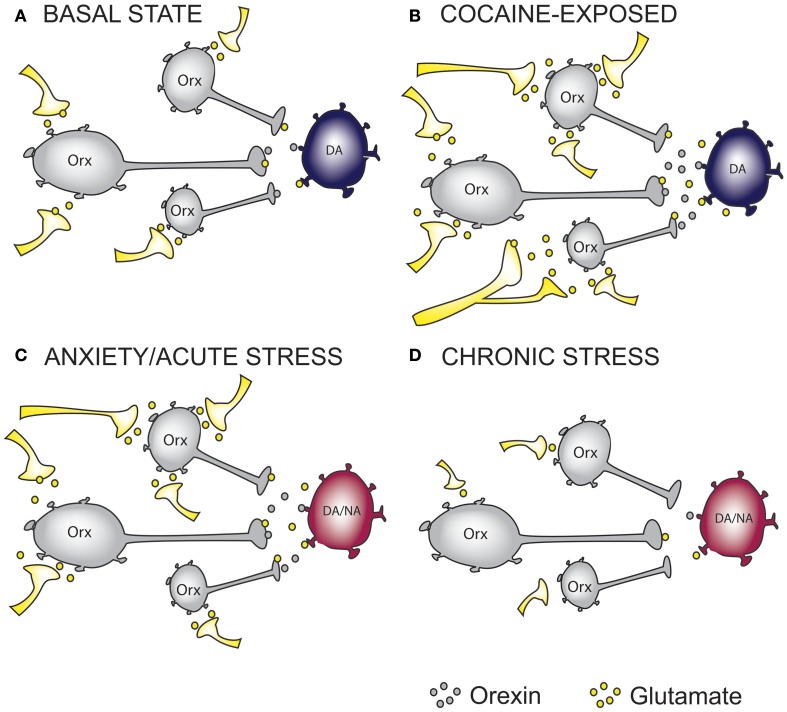Figure 1.
The effect of cocaine and stress exposure on orexin neurons. (A) Under basal conditions, orexin (Orx) neurons in the lateral hypothalamus receive excitatory inputs, thus providing “normal” glutamatergic and orexinergic (excitatory) tone onto downstream projection targets such as ventral tegmental area (VTA) dopamine (DA) neurons. (B) Based on recent studies, we propose that chronic cocaine-exposure rewires glutamatergic inputs onto Orx neurons resulting in increased excitatory drive onto DA neurons in the VTA. (C) Anxiety and acute stress are able to cause enhanced excitatory drive to DA neurons in the VTA and Noradrenergic (NA) neurons in the Locus Coeruleus (LC), an important projection target of orexin neurons. (D) Glutamatergic inputs onto Orx neurons in chronically stressed animals are impaired resulting in reduced excitatory drive onto DA and/or NA neurons. On the basis of this simplified hypothetical mechanistic rationale, orexin receptor antagonism represents a possible therapeutic intervention to treat anxiety and addictions. In the case of reduced orexin system activity, as may occur in some forms of depression or in response to chronic stress, mechanisms to augment orexin function may be required. Whether chronic modulation of these systems can be achieved without precipitating the expression of an alternate neuropsychiatric state warrants careful consideration.

